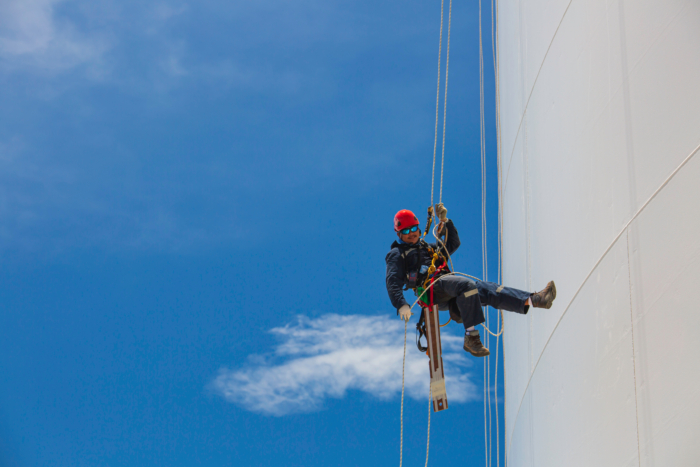This blog presents ideas on how best to identify and utilise the knowledge of experienced employees in order to extend the capability and relevance of the L&D function while simultaneously reducing required investment.
It’s well documented that many industries are facing similar demographic and related skills challenges. Whether the industry is Energy, Rail, Marine, Construction or any other industry requiring the application of rigorous safety standards, the challenges are real and impacting today.
Common challenges include:
- An ageing workforce – meaning that a large number of experienced employees will be leaving within the near term – taking all of their knowledge with them. In many ways this is similar to a massive hard drive of useful data being deleted. These people also need to be replaced and this is not easy when potential industry entrants have other choices and the named industries don’t always present high profile brands.
- Many new entrants have different requirements for their career and development. They tend to want more variety and have different (and higher) expectations regarding learning and opportunities. In many cases, the investment in traditional face to face learning with some standard e-learning is not going to cut it, particularly in reducing time to competence.
- Increasing requirement for digital skills development across the board. Almost all roles are being influenced by increasing digitisation raising a range of risks such as cybersecurity and the impact of mistakes in mismanaging digital tools.
How Training and L&D teams are currently set up
Most training teams are very aware of the challenges and striving to solve for these. Training functions though can be hamstrung by the amount of legacy investment in training infrastructure, restrictions on budget, variable support from top leadership as well as a lack of necessary investment in digital resources by providers to the industry. Lack of confidence with and experience in engaging with elements of digital learning delivery such as VR also plays a role.
I believe the time has come for L&D teams to find practical ways to harness the knowledge and insights possessed by their experienced employees and to make this available to relevant employees to speed up their time to competence. So how could this look?
Potential solutions
Everyone is good at a few things and many people are experts in a given area. Sometimes, the most capable people are unconscious of their competence as they take it as a given. Having the right competence frameworks and assessment processes in place however will mean that the identification of individuals with specified competences should be relatively straightforward.
The first question is whether there are experienced employees that will be willing to take part in a knowledge capture initiative. The answer has to be yes. If you have 100 engineers in your company, provided the process and benefits are clearly outlined, one could expect at least 10 to jump at the opportunity with perhaps another 20 – 30 being persuaded over time as the project unfolds.
So if finding the right people with the right knowledge is relatively straightforward, what’s the issue? Its not practical to expect that people with busy day jobs are regularly in your training centres to support learning events. Rather, the focus should be on:
- A single process to gather specific knowledge
- Converting this into useable material and disseminating this to the right audience
- Monitoring engagement and knowledge gain
- Improving post feedback
Stage 1: Gathering specific knowledge
In my view, stage 1 is the most challenging. Going back to the notion of many experts being unconscious of their competence, training can approach this in 2 ways: Having identified exemplars for certain competencies, training can be quite specific in their requirements. Training can either build a guide to enable experts to identify the constituent parts of a given technical process themselves or facilitate this jointly. The latter is more time consuming but likely to be more appropriate in the early stages of the initiative. Either way, the training team will need to run a short intervention to ensure the identified experts understand the basics of instructional design and how to create useful, compelling content.
The guide should address the basic instructional design objectives to ensure that a standardised, rigorous approach is followed. The guide should also include the required quality checks at the end of each stage to minimise any time wastage on the part of the experts involved. Direct involvement by training will also help to develop more meaningful guidelines for individuals working alone. My suggestion is that experts are asked to focus on no more than 2 technical processes in which they have deep expertise.
Experts should approach the task knowing what format the content will be converted into and thus be consumed in. For most technical processes, a short video (or series of short videos) accompanies by either a voiceover or set of notes should be sufficient.
The outcome of this phase will be an agreed instructional design detailing learning objectives and ways these will be delivered.
Stage 2: Creating and distributing content
Given that the focus is not on developing long “courses” but rather developing a range of shorter, micro learning pieces of content, one of the best ways forward is for the expert to be video’d carrying out the process. The video itself should ideally be accompanied by a written set of tips and guidelines. The expert will need to be provided with the appropriate equipment which will need to be hired/bought or used if there is stock. In most cases, a work colleague can service as the videographer. Remember, this is not about producing 5 star look and feel, but rather useful learning with 5 star content. The training team can take on any final editing required.
For getting to content to the right people, we suggest tagging or grouping individual learners for easy distribution as well as ensuing analytics. A good micro – learning solution will enable you to sent content to specific audiences and to support participation by introducing elements of competition including badges and leader boards.
Stage 3: Monitoring engagement and knowledge gain
By delivering quiz content to learners before they complete the learning, a benchmark of starting knowledge levels for each individual can easily be created. Starting levels of knowledge can easily be aggregated across functions, sites etc to provide additional analytics and insights.
Typically, each mini – course will have a number of associated quizzes to be delivered over time as a way of encouraging recall and retention. The science of using regular quizzes is called retrieval practice and it has been demonstrated that the use of recall techniques significantly improves knowledge retention. Consideration should be given to using AI to personalise quizzes so these are based on previous answers. In this way, individuals will be tested on their weaker areas rather than strengths. Many micro-learning platforms will offer this capability.
In many ways, the process outlined here suggests that the training team need to empower others in the organisation and to some, this may feel like relinquishing control. The use of a micro learning app enables easy insights into learner engagement, knowledge gain and retention, meaning that the training team is in full control of the overall process.
Stage 4: Improving post feedback
Quality control of the learning content (rather than process) needs to be a focus area for the process to be fully effective. By using experts within the business, the Learning and Development team is able to significantly scale the amount of relevant content available to learners within key areas and do so without major investment. Monitoring feedback and responding quickly with improvements where required will help to embed this modern approach to building knowledge and competence within the organisation.
Not only with scaling be achieved, the methods supporting learning will be attractive to younger employees and new entrants as these are the ways of learning they are most familiar with.
If you’re intrigued or would like to consider adopting a similar approach, feel free to contact us at sales.digital@3tglobal.com

